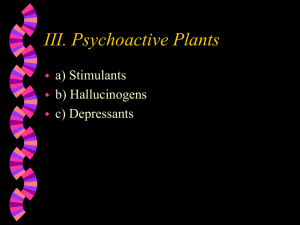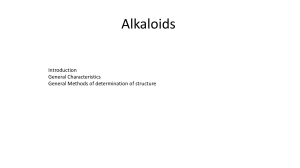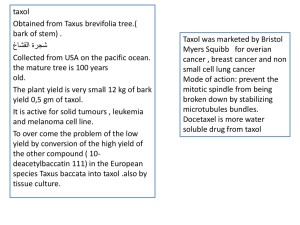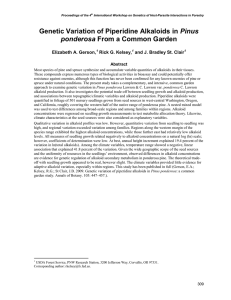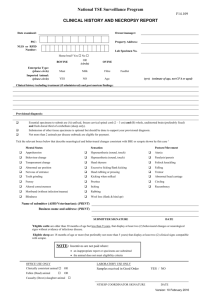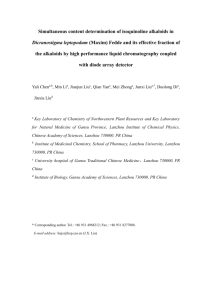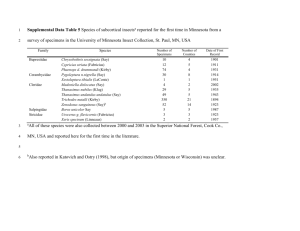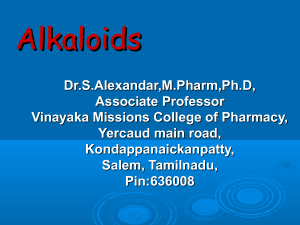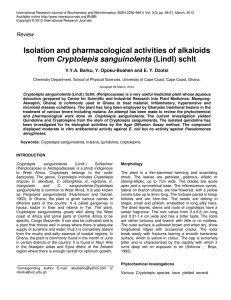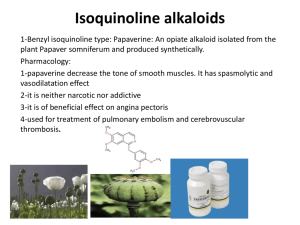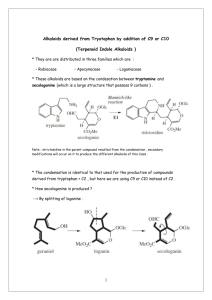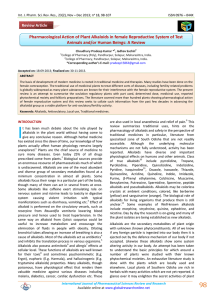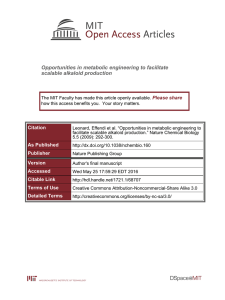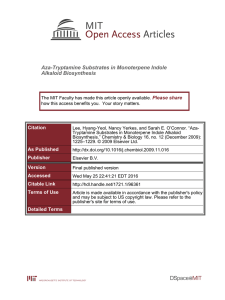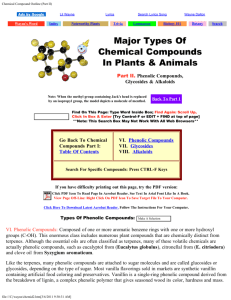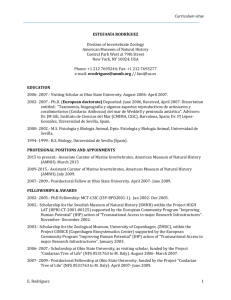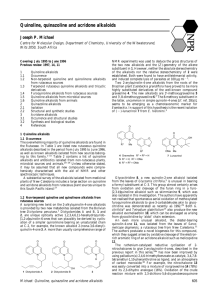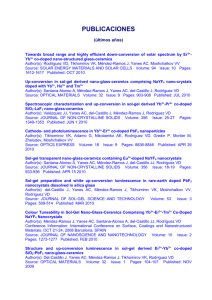Extended Methods and Structure of Indolizidines
advertisement
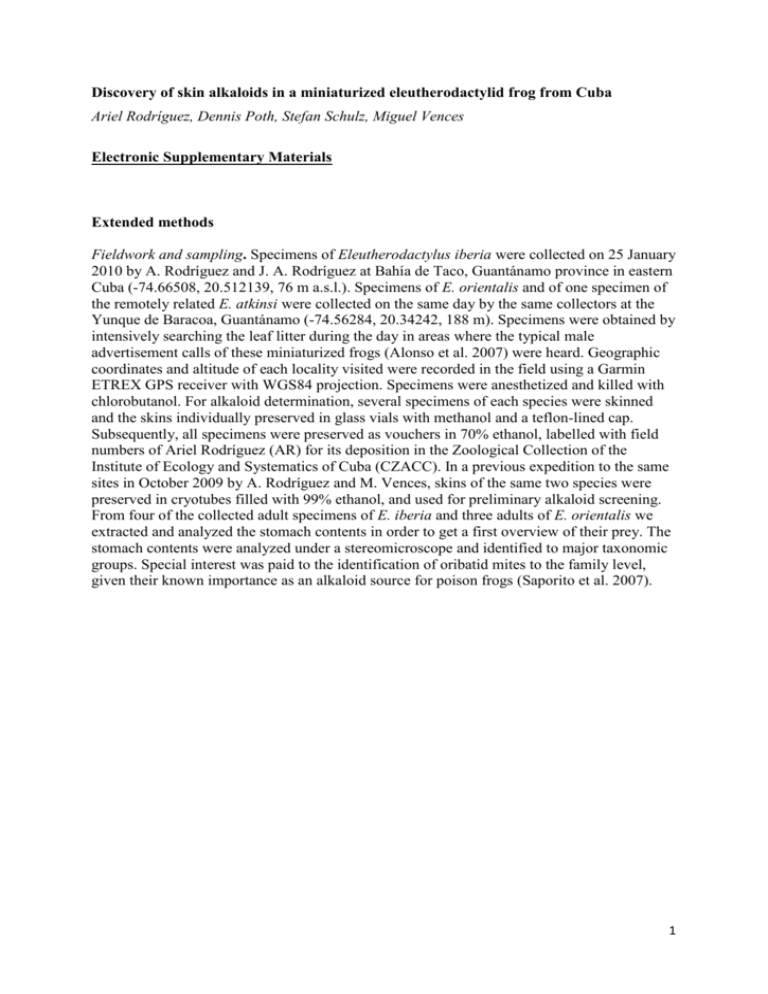
Discovery of skin alkaloids in a miniaturized eleutherodactylid frog from Cuba Ariel Rodríguez, Dennis Poth, Stefan Schulz, Miguel Vences Electronic Supplementary Materials Extended methods Fieldwork and sampling. Specimens of Eleutherodactylus iberia were collected on 25 January 2010 by A. Rodríguez and J. A. Rodríguez at Bahía de Taco, Guantánamo province in eastern Cuba (-74.66508, 20.512139, 76 m a.s.l.). Specimens of E. orientalis and of one specimen of the remotely related E. atkinsi were collected on the same day by the same collectors at the Yunque de Baracoa, Guantánamo (-74.56284, 20.34242, 188 m). Specimens were obtained by intensively searching the leaf litter during the day in areas where the typical male advertisement calls of these miniaturized frogs (Alonso et al. 2007) were heard. Geographic coordinates and altitude of each locality visited were recorded in the field using a Garmin ETREX GPS receiver with WGS84 projection. Specimens were anesthetized and killed with chlorobutanol. For alkaloid determination, several specimens of each species were skinned and the skins individually preserved in glass vials with methanol and a teflon-lined cap. Subsequently, all specimens were preserved as vouchers in 70% ethanol, labelled with field numbers of Ariel Rodríguez (AR) for its deposition in the Zoological Collection of the Institute of Ecology and Systematics of Cuba (CZACC). In a previous expedition to the same sites in October 2009 by A. Rodríguez and M. Vences, skins of the same two species were preserved in cryotubes filled with 99% ethanol, and used for preliminary alkaloid screening. From four of the collected adult specimens of E. iberia and three adults of E. orientalis we extracted and analyzed the stomach contents in order to get a first overview of their prey. The stomach contents were analyzed under a stereomicroscope and identified to major taxonomic groups. Special interest was paid to the identification of oribatid mites to the family level, given their known importance as an alkaloid source for poison frogs (Saporito et al. 2007). 1 Indolizidines from E. iberia skin extracts The mass spectra of the indolizidines did not correspond to known frog alkaloid mass spectra (Daly et al. 2005). The ions at m/z 70 and m/z 154 are typical for indolizidines and fit the structures of the other identified alkaloids. Nevertheless, the exact nature of the side chain of these new alkaloids remains elusive until more material for proper identification is available. Figure S1. Mass spectra of two unknown indolizidine alkaloids from E. iberia. Note that the denotion of the structure (1) and (2) is not meant to replace the alkaloid nomenclature as used by J.W. Daly and colleagues (e.g., Daly et al. 2005). 2 Figure S2. Phylogenetic relationships among families of neobatrachian frogs, including those reported to contain lipophilic alkaloids (in bold and underlined; the newly reported eleutherodactylid lineage in red). Families according to Frost (2010) with some modifications; phylogenetic relationships largely compiled from Frost et al. (2006) and Hedges et al. (2008). 3 References Cited in Electronic supplementary materials Alonso, R., Rodríguez, A. & Márquez, R. 2007. Sound Guide of the Amphibians from Cuba. ALOSA sons de la natura. Audio CD & booklet, 46 pp. Daly, J. W., Spande, T. F., & Garraffo, H. M. 2005. Alkaloids from amphibian skin: A tabulation of over eighthundred compounds. J. Nat. Prod. 68, 1556–1575. Frost, D. R., Grant, T., Faivovich, J., Bain, R. H., Haas, A., Haddad, C. F. B., de Sá, R. O., Channing, A., Wilkinson, M., Donnellan, S. C., Raxworthy, C. J., Campbell, J. A., Blotto, B. L., Moler, P., Drewes, R. C., Nussbaum, R., Lynch, J. D., Green, D. M. & Wheeler, W. C. 2006. The amphibian tree of life. Bull. Am. Mus. Nat. Hist. 297, 1-370. Frost, D. R. 2010. Amphibian Species of the World: an Online Reference. Version 5.4 (8 April, 2010). Electronic Database accessible at http://research.amnh.org/vz/herpetology/amphibia/ American Museum of Natural History, New York, USA. Hedges, S. B., Duellman, W. E. & Heinicke, M. P. 2008. New World direct-developing frogs (Anura: Terrarana): molecular phylogeny, classification, biogeography, and conservation. Zootaxa 1737, 1–182. Saporito, R.A., Donnelly, M.A., Norton, R., Garraffo, H.M., Spande, T.F. & Daly, J.W. 2007. Oribatid mites as a major dietary source for alkaloids in poison frogs. Proc. Natl. Acad. Sci. USA 104, 8885–8890. 4
